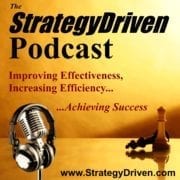Business Politics Impacts – Cost of Employee Attrition

A company of 250 employees making an average of $43,000 per year experiencing a 20 percent attrition rate spends an estimated $2.15M on employee replacements annually.
Cost of Employee Attrition
The American Management Association estimates the cost of employee turnover as ranging from between 25 percent (for entry level employees) and 250 percent (for executive level employees) of the employees annual salary.1 These costs are derived from a multitude of sources including:
Hi there! Gain access to this article with a StrategyDriven Insights Library – Total Access subscription or buy access to the article itself.
| Subscribe to the StrategyDriven Insights Library
Sign-up now for your StrategyDriven Insights Library – Total Access subscription for as low as $15 / month (paid annually). Not sure? Click here to learn more. |
Buy the Article
Don’t need a subscription? Buy access to Business Politics Impacts – Cost of Employee Attrition and gain access to it and the accompanying tool for just $2! |













Leave a Reply
Want to join the discussion?Feel free to contribute!